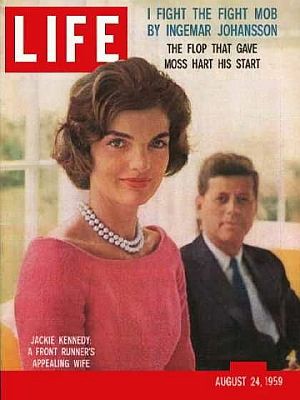A Canadian Visits The Nation’s Capital, Pt. 2: Fashion Edition

This morning I had an early appointment and I got to walk with all the other people commuting to and from their permanent residences and offices in Washington, D.C., and I was doing what I always do and evaluating the fashion patterns around me, trying to pick out the dominant themes and trends. They were… about what you would expect of government employees working in the nation’s capital: a lot of khakis on the men. Light blue button-down shirts. Ties, but not too many; blazers carried over arms because of the truly disgusting heat.
The women wore the same shapes and textures with some slight variations: shell tank tops, shift dresses, pencil skirts, silky blouses. Ballet flats. Pearls. Lots of pearls.
I was thinking about how some professional subcultures are immune to fashion trends. The styles visible outside right now in Washington D.C. are, for the most part, based on the Kennedy era of fashion. That’s the last time there was a huge shift in the way people thought about office-appropriate attire, which does seem funny: like, how could a tasteful shell and cardigan draped over the shoulders have been a monumental shift? But it was!!
Before Jackie Kennedy, America’s first lady was Mamie Eisenhower. That’s like night to day when it comes to clothing: Mamie loved pastel pink and matching every element to her outfit, from shoes to hats, and her dresses were formal, structured, a kind of Americanized version of Dior’s New Look. Jackie’s look has become so ubiquitous that I don’t need to describe it, but it is crucial to note that one of her favorite designers was Balenciaga, and her style advisor was Diana Vreeland. She was operating on a really elevated level of fashion that relied on the history and tradition of Parisian couturiers — people who were questioning why clothing had to look the way it always had, while enforcing social norms about how a woman should dress — and the woman dictating trends across America through everyone’s favorite know-it-all source of information: women’s magazines.
Since Jackie, every woman in American politics has favored a similar style, with minor variations: either slightly more fashion-forward, or slightly more conservative. Michelle Obama, as everyone knows, has excellent taste in clothing and designers (both American and international), but even her taste tends to run towards a more modern version of the same old look, right down to the shells and the pearls.
Trends that stand still across time are, to me, just as fascinating as the ones that evolve every season, because they reflect basic principles untouched by time or interpretation. Jeans get baggy or skinny, waist and hem lines go up or down, zippers replace buttons, heels rise or fall. But changes in political attire, while subtler, require massive social upheaval. They reflect actual newness, even just through a pair of capris.
I wonder: what’s the next major shift that will alter the way this particular pocket gets dressed in the morning? Who will be the first First Lady to dress like an extra from Logan’s Run, or sport the burlap sack?